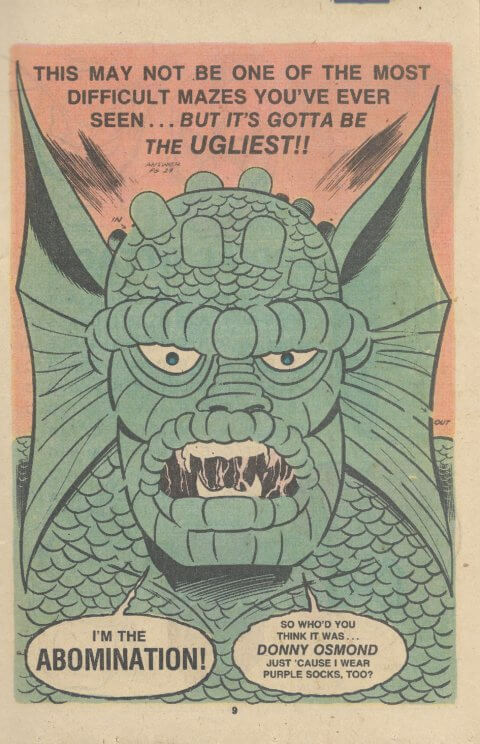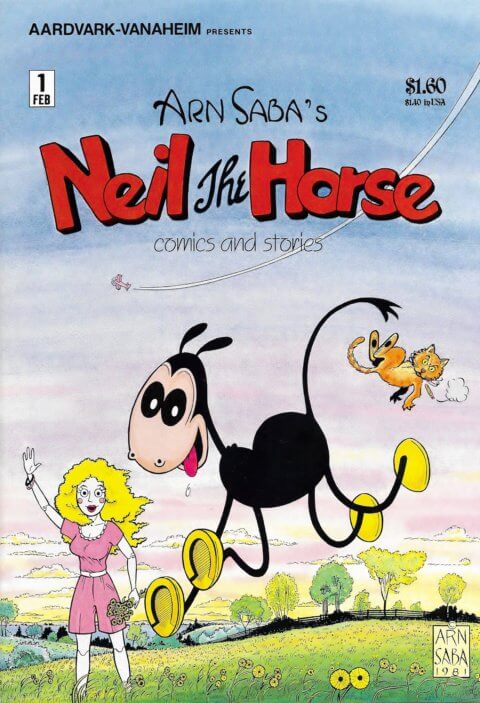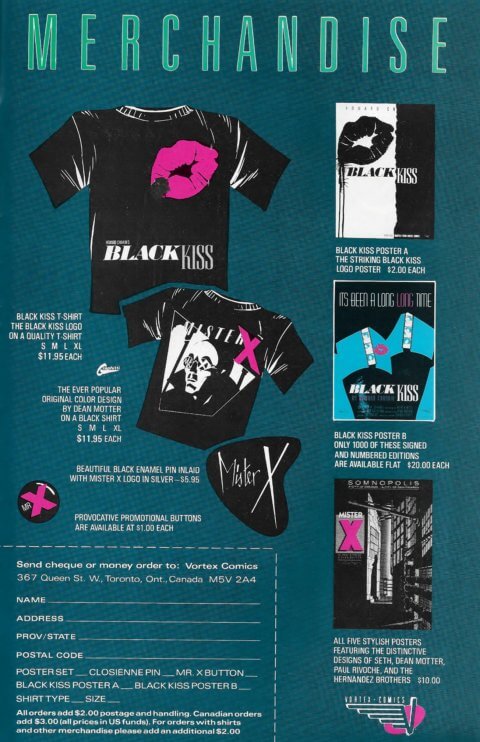It dawned on me after re-reading last month’s column, “An Introduction to Neil the Horse,” that I jumped right into things and didn’t really introduce the three main characters at all. Who is Neil the Horse? I recently stumbled upon a great article from Trina Robbins for The Paris Review from 2017 that features an interview with Katherine Collins, as well as a comic strip from 1975 that introduces Neil and Soapy.
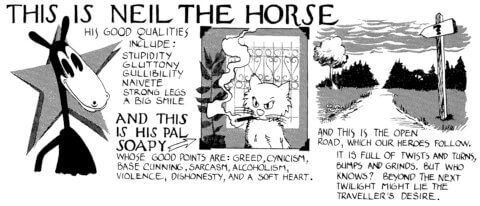
In the abovementioned interview, Collins outlines of how she eventually came to see her three main characters as “active ingredients” of her personality:
• Neil himself is the fun-loving child, trusting and guileless, able to find joy in almost everything, and totally lacking in a dark side. My “inner child” is still very alive, and not very inner.
• Soapy is the worldly business sharpie, very happy to break laws—in fact, eager to—and tinged with a world-weariness. But he has a heart of gold and is too generous for his own good.
• Poupée is, of course, my female self, but more importantly (and more consciously, at the time) my lovelorn, heartbroken, and ever-yearning self. Poupée is still yearning and wishing upon a star.
By the time that Neil the Horse Comics and Stories debuted for Aardvark-Vanaheim, Neil and Soapy were both fully developed characters, but Mam’selle Poupée was still very much a character in its still-nascent stage. From what I understand, Mam’selle Poupée would become more and more the focus of the series as time went on. I hope to have a chance to explore this in time, but today I will be looking at early issues of the Aardvark-Vanaheim series.
When Neil the Horse Comics and Stories debuted from Aardvark-Vanaheim in February 1983, the character already had some buzz and was something of a minor hit. At its peak, issues are said to have sold between 6,000 and 10,000 copies, which was significant for an indie publisher at the time. Collins was able to stick to the bimonthly schedule and by the end of 1984 had published ten issues of the series. After Dave Sim and Deni Loubert divorced, Neil the Horse Comics and Stories moved to Loubert’s new company Renegade Press. However, she only published five more issues between 1985 and 1988.
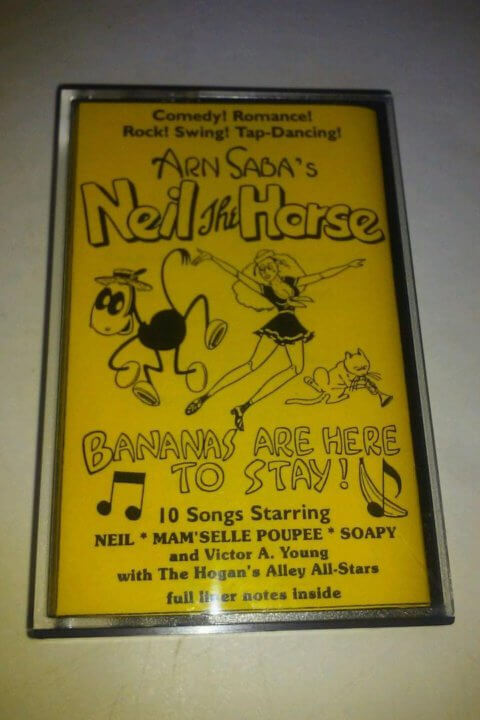
Collins already had a built-in audience due to her the long-running comic strip. However, in 1982, Collins wrote a long-form radio musical called Neil the Horse and the Big Banana that was broadcast in five episodes on CBC’s Morningside. Collins wrote the script, music and lyrics, while also providing the voice of Neil. The musical also features covers of old tunes such as Henry Hall’s “I Like Bananas (Because They Have No Bones).” The musical was well-received, and Collins planned to use this as a springboard for other projects that, unfortunately, never came to fruition. The musical is available on YouTube. Collins did produce a cassette tape of new material in 1986, which could only be purchased through the comic book.
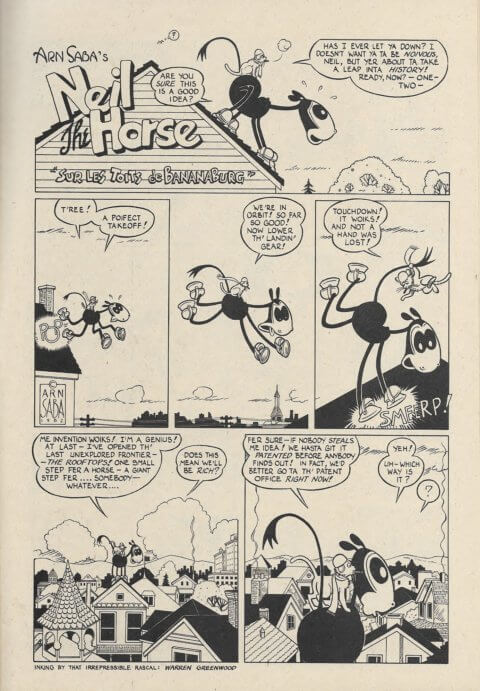
Even though the Neil the Horse franchise eventually fizzled out, Neil the Horse Comics and Stories debuted with some momentum. The first issue of the comic reprints several of Collins’ strips but offers a fun batch of fresh material. For example, the main story in the first issue, “Sur Les Toits de Bananaburg,” features Neil and Soapy traversing the rooftops of the city with Neil sporting Soapy’s newest invention: suction cup shoes! The shoes allow Neil (with Soapy riding him) to quickly avoid the traffic in the city. Soapy decides that they need to get to the patent office before someone else steals his invention. Unfortunately, onlookers assume that they are Peeping Toms or burglars and call the police. The police start using their own suction cup shoes, but terrified onlookers think that they are aliens, and the military is called in. The military repeats the process. Aliens ultimately do arrive but are too afraid of all the “monsters with suction cups on their feet” and flee to Venus. Ultimately, Soapy and Neil make it to the patent office minutes after it has closed and are turned away. The authorities come to realize that there were no aliens or criminals and by the next morning everyone in the city has jumped on the suction cup shoe fad.
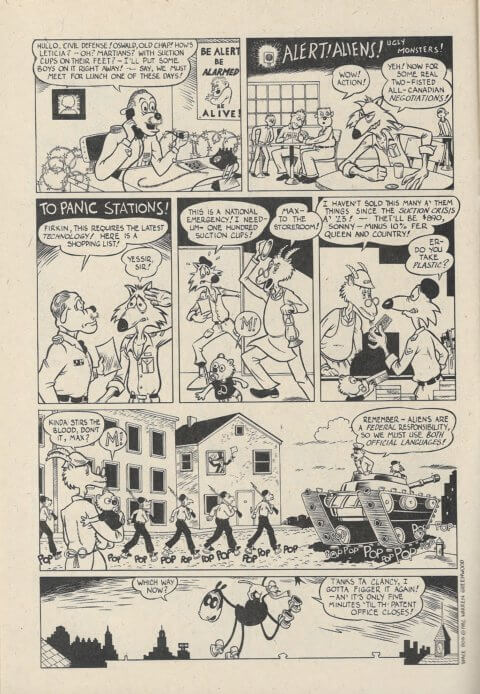
This very silly story exemplifies what happens in a Neil the Horse comic. It is whimsical, fun, and doesn’t take itself too seriously, while also being quite smart. “Sur Les Toits de Bananaburg” also features a blink and you miss it cameo from an indie comics character that was popular at the time: Warren Greenwood’s Space Dog. The Space Dog character appears briefly as uniformed military member.
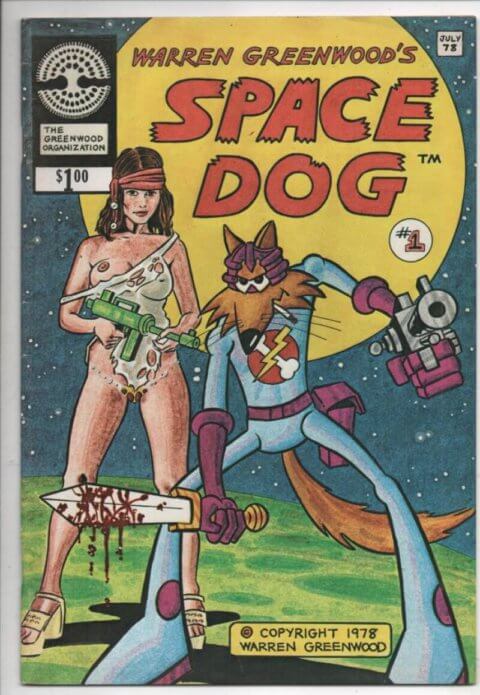
The second full-length story in Neil the Horse Comics and Stories # 1 is called “Neil the Horse Goes to Hell” and starts with Neil and Soapy on trial. Neil is accused of having consumed an illegally acquired shipment of 10,000 bananas. Soapy insults the judge and they are both sentenced to Hell. In Hell, the two protagonists find themselves fleeing from a group of singing, pitchfork wielding devils who are trying to force Neil to eat “tobasco (sic.) sauce.” As they flee the devils, Neil and Soapy inadvertently destroy Hell in the process in several slapstick comedy panels. As a result, they get kicked out of Hell, but Heaven won’t take them in, so they are returned to the streets of Bananaburg.
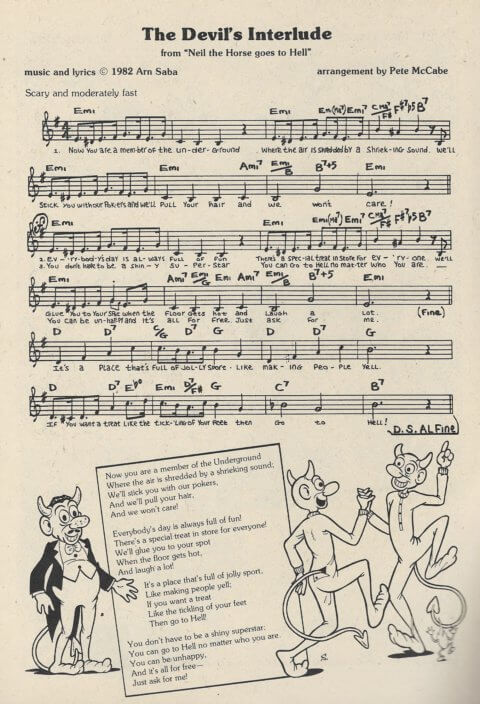
The final major story in the first issue of the comic is the first part of “Neil the Horse in Old New France.” This is a serialized, illustrated novella that inserts Neil, Soapy and Mam’selle Poupée into the colony of New France sometime in the 1600s. The three characters arrive by boat with numerous women who are supposed to become wives of the men who built the new colony. The old mother hen, Madame Pruneau (who is responsible for the women), has come to despise Neil and his companions, with a particular disdain for Mam’selle Poupée. The colony’s Governor, on the other hand, takes a shine to Mam’selle Poupée. As the hundreds of women who were on the boat head to the convent with Madame Pruneau, Neil, Soapy and Mam’selle Poupée accompany the Governor to begin their new adventure.
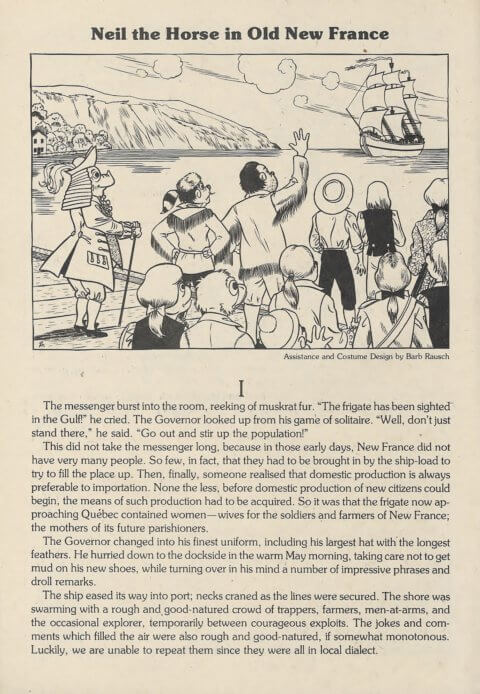
The novella is distinctly different from the rest of the issue and starts to build the Mam’selle Poupée character in her own right. Barb Rausch is credited with costume design for the characters in the accompanying drawings. Of course, the comic ends with a Mam’selle Poupée paper doll ensemble drawn by Rausch, which I discussed last month and is a hallmark of the series.
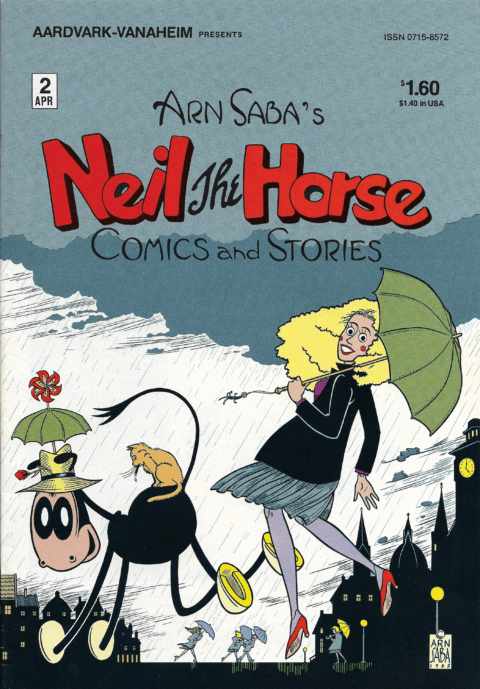
The second issue of Neil the Horse Comics and Stories was released in April 1983. Despite having quite a bit of buzz, Deni Loubert mentions in her “A Note From the Publisher” section that, “Although response to the book has so far been fairly light, it has been enthusiastic” (original emphasis). This statement was kind of surprising to me, as I had assumed that the series had been an instant hit for Aardvark-Vanaheim. Loubert’s statement suggests that it took a little while to find its footing.
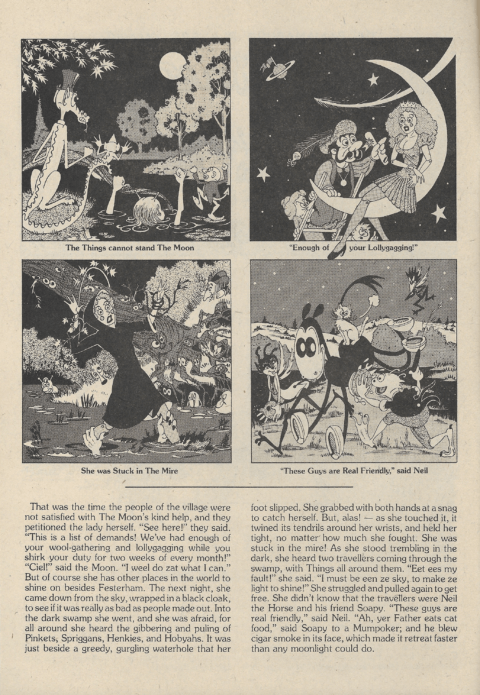
The comic starts with a five-page illustrated short story called “The Buried Moon,” which tells the tale of the village of Festerham, how its inhabitants don’t like each other and how for half of the month (when The Moon is not out) the villagers are terrorized by monsters that live in a nearby swamp. After the villagers petition The Moon to do more to help them, the embodiment of The Moon (Mam’selle Poupée) descends upon the swamp, only to be captured by the monsters. The same evening sees Neil and Soapy traverse the swamp on their way to the village. However, when they arrive in Festerham, the residents believe them to be monsters and they are rejected. Since The Moon has been captured, the monsters descend upon the village causing the villagers to flee. Soapy and Neil break into the village’s hotel kitchen and eat until they are full. Bored, they realize that the village is under siege because of the missing Moon. They enter the swamp and save her, leading to the monsters retreating. Unfortunately, the villagers assume that Neil and Soapy are the leaders of the monsters, so they are turned away from the village as the story ends.
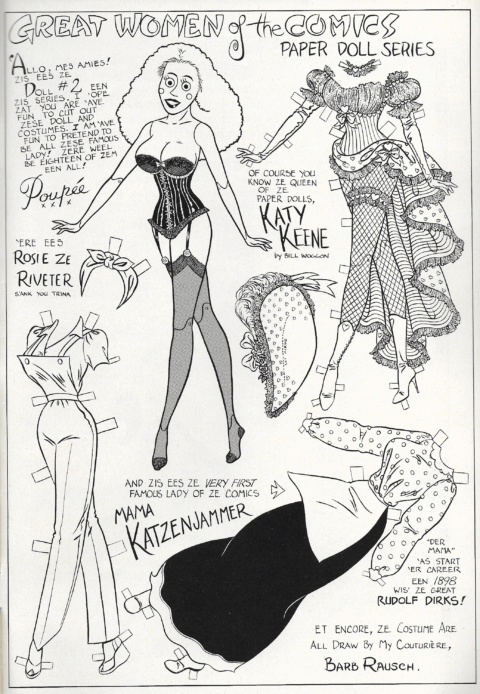
Stuff like this and the serialized novella about New France that begins in the first issue of the series are examples of how Neil, Soapy and Mam’selle Poupée embark on adventures across time and space. Any setting seems to work for the trio, though most of the stories take place in the city of Bananaburg.
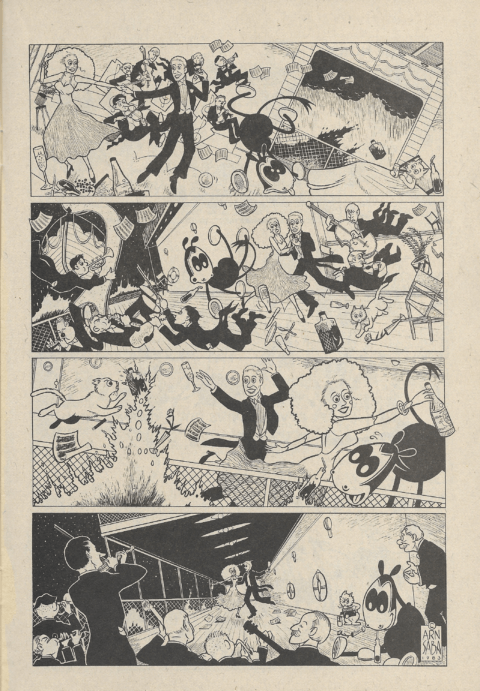
The second issue of the series continues to develop the Mam’selle Poupée character. After “The Buried Moon,” there is a standalone two-page Mam’selle Poupée story that has no dialogue. The story takes place on an unnamed ship that resembles the RMS Titanic. Neil and Soapy are also present as background characters. Mam’selle Poupée is on a date with a handsome man and, as they start dancing, the ship hits rough waters (it’s not clear that it’s sinking). The band plays on as Mam’selle Poupée and her date continue to dance.
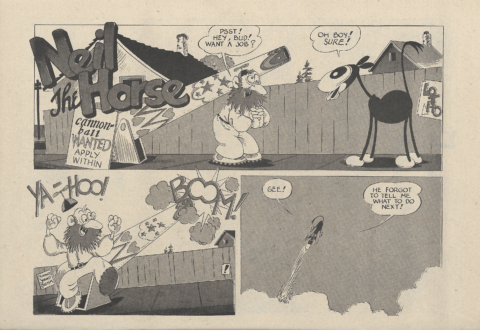
Much of the rest of the issue includes reprinted Neil the Horse comic strips, as well as a longer story where Neil is offered a job being shot out of a cannon and ends up landing on an airplane. Doing so causes the tuba being transported by the plane to become dislodged. The pilot dips and doodles the plane around Bananaburg trying to save the tuba, hitting numerous buildings in the process, causing them to collapse.
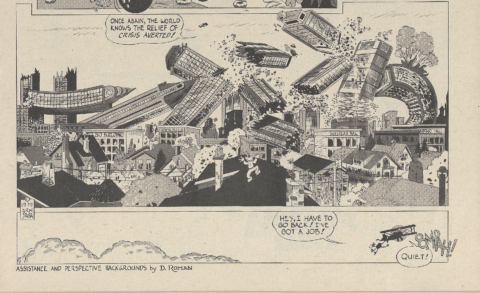
The comic also reprints a strip starring a character named Percy Platypus and continues the “Neil the Horse in Old New France” novella, while also providing a new page of sheet music and another Mam’selle Poupée paper doll designed by Barb Rausch. Unlike the first issue, which had a cameo of indie comic character Space Dog, nothing similar occurs in issue # 2. However, there are a couple of surprises in the first ever letters page at the back of the comic (called “The Pony Express”).
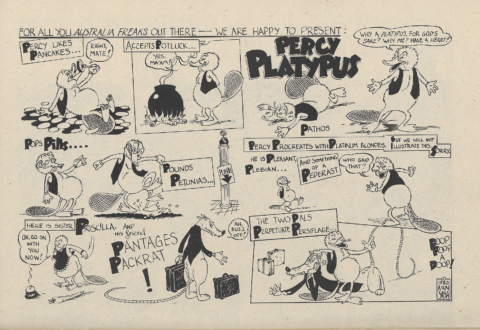
Two extremely important figures in comics sent letters to Collins after the first issue came out, which are reprinted here. The first is Will Eisner, one of the best-known comic creators of the 20th century. The second is Terry Edwards, who produced some of the earliest comics of the Canadian Silver Age that weren’t giveaways (Comic Canada # 1 and Comicanada # 2) and who helped launch the careers of Vincent Marchesano and Art Cooper.
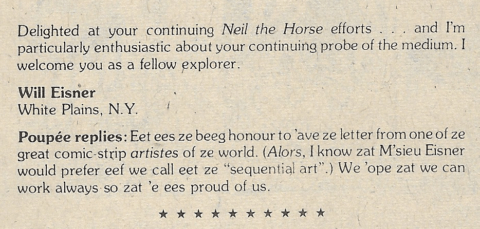
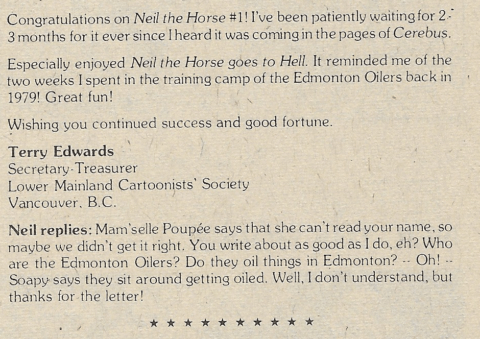
I must say that I have become quite enamored with Neil the Horse Comics and Stories, as well as Collins’ radio plays over the past couple of months. After diving into the first two issues, I am left wanting to read the rest of the series. I have issue # 3 but will have to track down the other issues sooner than later.
Katherine Collins has become one of the most overlooked gems of the Canadian Silver Age. Despite garnering newfound interest in 2017 when Conundrum Press released The Collected Neil the Horse, her work continues to be overlooked. Once I collect more material, I plan to revisit Collins’ work here. In the meantime, if you want to learn more about what Collins has been up to since leaving the comics industry, I recommend checking out Conan Tobias’ 2017 Quill & Quire article “Katherine Collins, creator of the comic Neil the Horse, gets back in the saddle.”
Next month I will look at some comics that I recently acquired that I have been trying to source for more than seven years.

